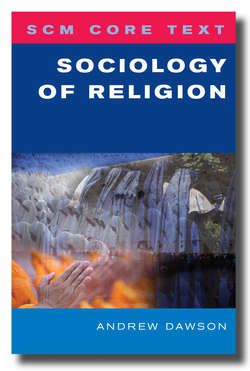Читать книгу SCM Core Text Sociology of Religion - Andrew Dawson - Страница 37
На сайте Литреса книга снята с продажи.
Micro-social dimension
ОглавлениеWhen treating the micro-social dimension of religion, sociology turns its gaze upon both individual believers and the interpersonal practices through which individual belief is expressed. Although a philosopher and not a sociologist, Wittgenstein’s definition of religious belief provides a useful summary of some key features of religion’s individual dimension.
It strikes me that a religious belief could only be something like a passionate commitment to a system of reference. Hence, although it’s belief, it’s really a way of living, or a way of assessing life. It’s passionately seizing hold of this interpretation. (1980, p. 64)
Emphasizing the symbolic aspects of faith, Wittgenstein captures the irreducibly subjective and non-vicarious character of religion’s individual dimension. He also furnishes a succinct representation of religious belief’s volitional, affective, evaluative, signifying and commitment-orientated nature. Although by no means a favoured topic of traditional sociology of religion, contemporary treatment of the individual dimension of belief draws support from established interpretative (also called ‘hermeneutical’) approaches. Such is the case because the micro-sociological focus of these approaches lends itself to engaging the subjective dynamics of such things as meaning-making, motivation and intent. For example, the individual dimension of belief may be engaged by sociologists wishing to explore the subjective dynamics informing the participation of women or homosexuals within conservative religious repertoires which both seemingly reject gender equality and apparently give nothing by way of affirmation to gay identity (see Chapter 6). At the same time, the subjective dimension of belief may be explored by asking individuals to explain the significance for them of religious practices and beliefs such as meditation, prayer, reincarnation and salvation (Spickard, 2007, pp. 121–43; Voas, 2007, pp. 144–66).
As Durkheim remarks, ‘religion is something eminently social’ (2001, p. 11). Consequently, talk of individual religiosity in isolation from the other dimensions which inform it can only ever be regarded as an abstraction by which religion’s subjective sphere is artificially isolated (‘bracketed’) for the purposes of analytical clarity. In actuality, an individual’s religious beliefs (along with the values and practices they inform and are informed by) are held, affirmed, challenged or modified relative to ongoing association with other human beings. From the formal interactions of religious ritual to informal encounters with friends and family (religious or otherwise), individual religiosity is informed by and expressed through associational activity. At the same time, associational modes of religious expression do not occur at random. The religious interaction of individuals, objects and events occurs at set times, with specific formats in given places because it is orchestrated by a particular constellation of organizational processes, ideational dynamics and social forces. Compare and contrast, for example, the Shabbat service of a Hasidic synagogue with that of a Liberal Jewish community. In each case, the physical use of sacred space, the oral and literary contents of the liturgical act and the distribution of ritual responsibilities will be different because they reflect varying institutional contexts and divergent theological construals – not least those treating the respective relations both of tradition and modernity and of men and women.
